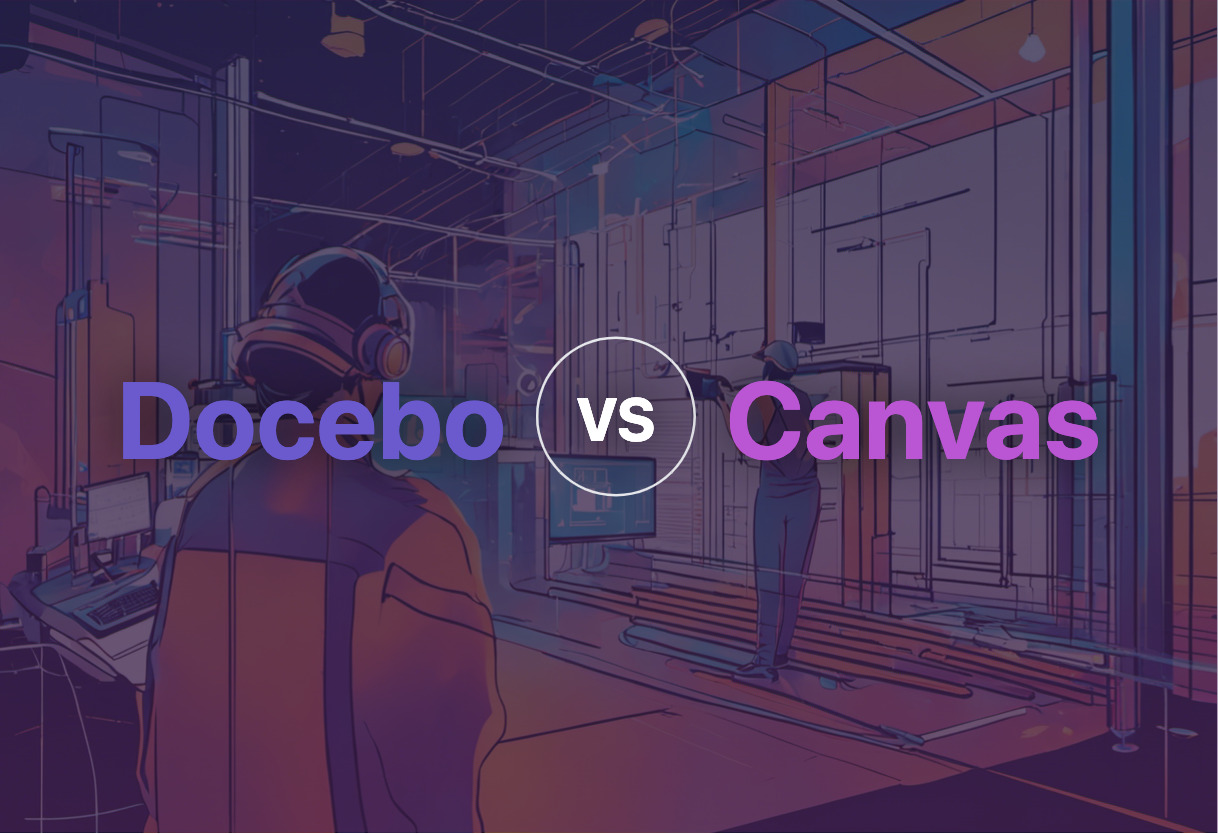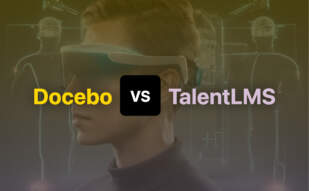If you’re seeking an optimized e-Learning platform for enterprise training fidelity, Docebo takes the crown with its customizability, extensive integration support, and robust features for both internal and external participants. However, for developers inclined towards creating dynamic graphics or gaming applications via JavaScript, Canvas is the undisputed choice due to its vast drawing and transformation abilities.

Key Differences Between Docebo and Canvas
- Primarily, Docebo is an e-Learning platform catered towards corporate training needs while Canvas is a HTML element used for rendering dynamic graphics and animations.
- Docebo supports over 400 integrations including HRIS, CRM, SSO platforms, whereas Canvas relies on JavaScript for graphic interpretations.
- In terms of execution, Docebo pursues a user-centric learning approach with gamification features, while Canvas revolves around pixel-level manipulation for interactive content creation.
- Pricing for Docebo is based on Active Users, starting at $1,600/month, while Canvas, being a HTML element, is free to use.
| Comparison | Docebo | HTML |
|---|---|---|
| Target Users | Enterprises and businesses extending L&D programs across multiple units; ideal for 300+ learners. | Web developers specialized in on-the-fly graphics creation. |
| Key Features | Customizable training programs, gamification elements, mobile learning compatibility, integration with 400+ third-party applications. | On-the-fly graphics creation, including paths, boxes, circles, text, images; interactions, animations, and game applications. |
| Language Support | 40 languages. | Uses JavaScript primarily. |
| Interface Customization | Custom domains, logos, login pages, layout, navigation for each audience subgroup. | N/A as it pertains to the HTML5 standard, indie of user interfaces. |
| Integration | 400+: CRMs, HRISs, SSOs, content authoring, web conferencing. | Needs accompanying scripts to render graphics; IE8 requires ExplorerCanvas script. |
| Learning Aids | Online courses, video tutorials (YouTube, Vimeo), badges, awards for learner engagement. | Function-based scripting for graphics manipulation; can include images, colors, fonts, gradients, patterns, and basic animations. |
What Is Docebo and Who’s It For?
Docebo is a premier e-Learning platform designed explicitly for enterprise-level corporate training. Serving over 3500 customers globally with high-profile names like Amazon Web Services, Walmart, Samsung, and Thomson Reuters on its client list. This training software provides customizable training programs and prides itself on its learning center construction that has saved clients significant training costs and increased their revenues multifold.
While the platform integrates with over 400 tools including HRIS systems, LMS data warehouses, and enterprise messaging platforms, it’s particularly suitable for companies looking to supercede their current LMS with a more refined and flexible system. Docebo has a strong appeal for businesses intending to extend Learning & Development (L&D) programs across various units and providing training in multiple languages.

Pros of Docebo
- Customizable training programs
- Supports major e-learning formats
- Available integrations with 400+ business tools
- Multi-language interface
- Offers gamification for learner engagement
Cons of Docebo
- Annual commitment required
- Extra customizations subject to additional fees
- Pricing based on active users per month, starting from $1600/month
What Is HTML and Who’s It For?
The HTML

Pros of HTML
- Ability to create on-the-fly graphics
- Draw a multitude of shapes and text
- Great for detailed manipulation at pixel level
- Multiple elements can be used on one page
Cons of HTML
- Graphics need to be drawn with script
- Requires rendering context to display anything
- Support needed for IE8 users
Docebo vs HTML Canvas: Pricing
While Docebo takes a user-based pricing strategy, HTML Canvas is available for free as a part of HTML5 web standards.
Docebo
Pricing is centered on the number of Monthly Active Users. Offers are grouped into the Growth Plan, intended for up to 500 active users, and the Enterprise Plan for 500+ active users. About $5.95 per user per month depending on scale. A base price of $1,600 per month is the starting point and Annual commitment is obligatory, with the option for monthly or yearly billing. Additional customization is subject to additional fees.
HTML Canvas
This is a feature integrated within HTML5 and thus doesn’t have an independent pricing model. You don’t get charges for using HTML
The Final Showdown: Docebo vs Canvas
In the electrifying arena of edtech, two giants stand tall: Docebo and Canvas. But which is the true titan?
Corporate Trainers
For those in the corporate and enterprise training sphere, Docebo should be your pick. With customers like Zoom, PowerDMS, and CHART Healthcare Academy, it’s a robust e-Learning platform. It supports 300+ learners in their L&D projects, is multilingual, and boasts 400+ integrations.
Online Course Creators
If your aim is to multiply revenue through online course creation, Docebo is a smart choice. It increased revenues 5x for Online Courses Australia and offers a tailor-made learning path.
Developers and Game Makers
Canvas stands unrivaled for developers and game makers. Canvas offers flexible drawing capabilities with Raster graphics, animations, gradients, and Pixel-level manipulations.
Graphic Designers
For the artistically inclined, the HTML5 
For corporate training, choose Docebo but for developing cutting-edge graphics, Canvas reigns supreme. Both powerful, your choice boils down to application. Now get out there and conquer your niche!
Hannah Stewart
Content writer @ Aircada, tech enthusiast, metaverse explorer, and coffee addict. Weaving stories in digital realms.





